We are looking for a PhD student interested in the functional, molecular and structural profile of neuronal circuits underlying learning, memory and behavior. In a 30-year research effort (lay summary, paper), we have recently identified a new gene (atypical PKC, aPKC) necessary for a form of motor learning in the fruit fly Drosophila and in which neurons it is required.
Rogue Scholar Posts
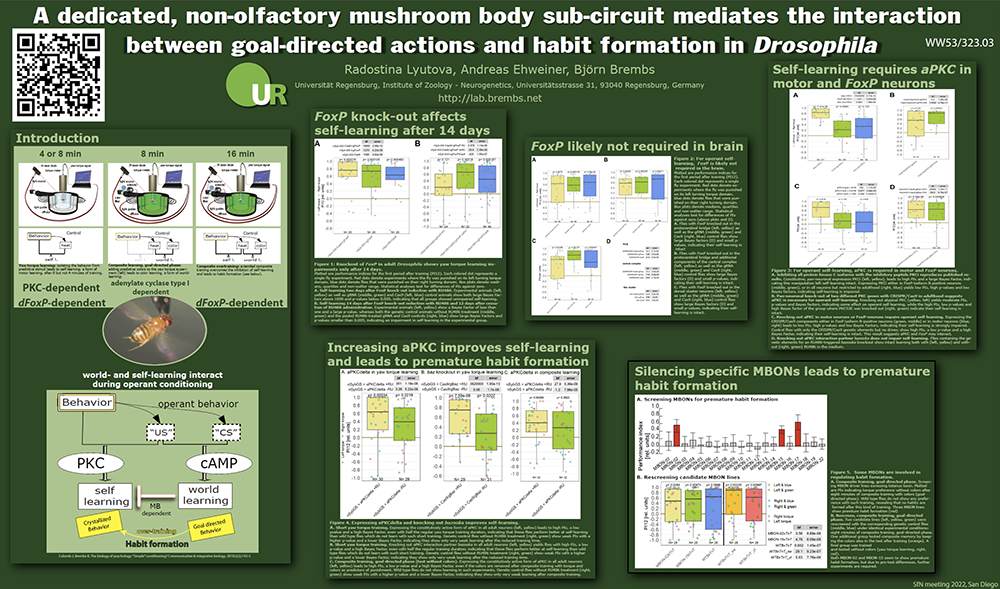
I just sent the poster for this year’s Society for Neuroscience meeting to the printer. As our graduate student is preparing his defense and our postdoc did not get a visa (no thanks, US!), we just have a single poster this year and I will present it myself on Monday, November 14, 2022, 8:00 AM – 12:00 PM, on poster board WW53.
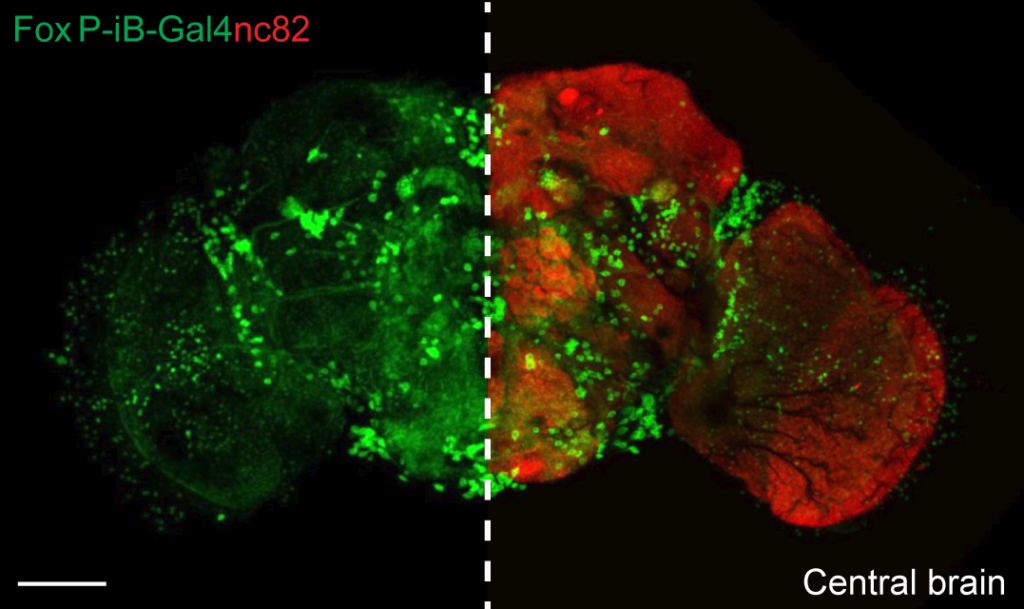
The FoxP gene family comprises a set of transcription factors that gained fame because of their involvement in the acquisition of speech and language. While early hypotheses circulated about its function as a ‘learning gene’, a simultaneous “motor-hypothesis” stipulated that the gene may be more of a motor learning gene, involved in different kinds of motor learning, one of which is speech acquisition.
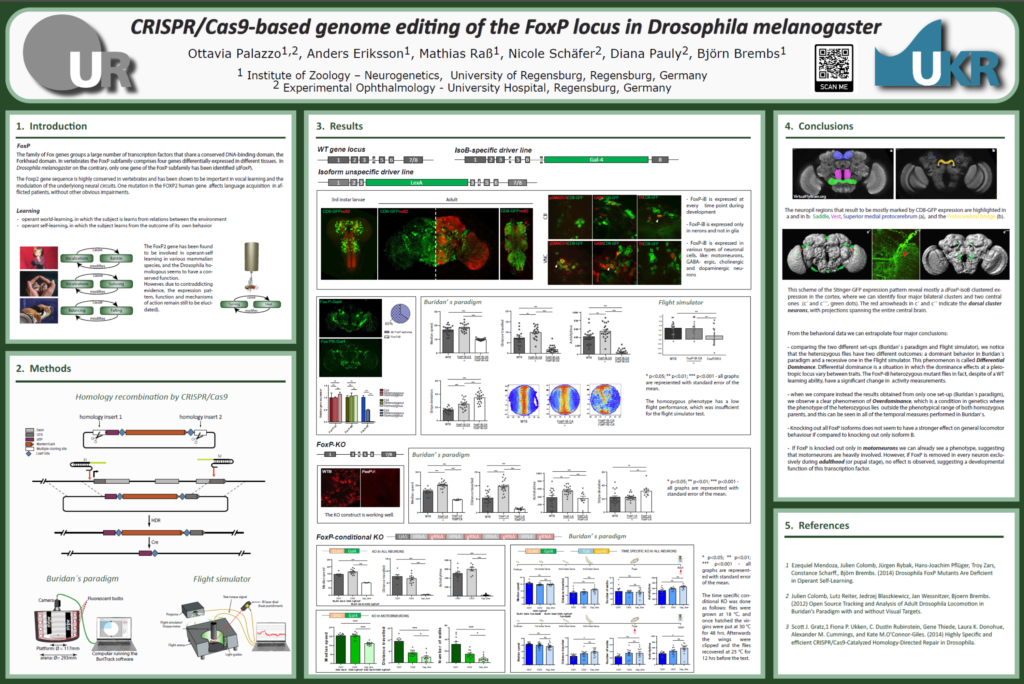
Tomorrow we travel to the annual meeting of the Society for Neuroscience and our diligent scientists have already printed their posters! Ottavia Palazzo will present her work on genome editing the FoxP locus of Drosophila with anatomical and behavioral characterizations of the various transgenic lines she has created.
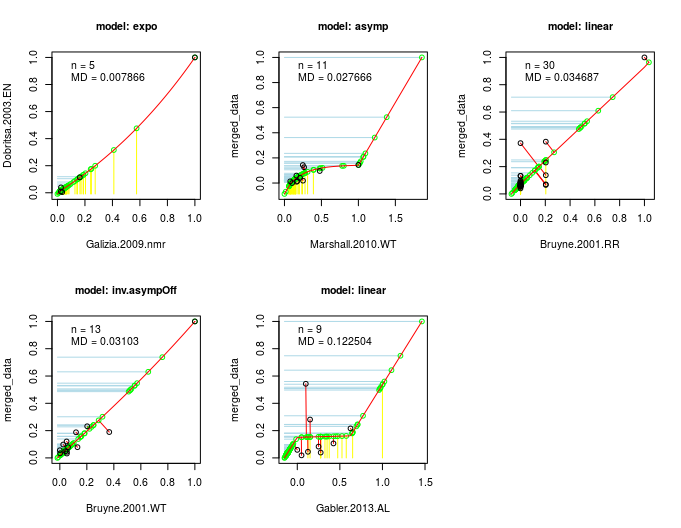
Olfactory Coding Detecting volatile chemicals and encoding these into neuronal activity is a vital task for all animals that is performed by their olfactory sensory systems. While these olfactory systems vary vastly between species regarding their numerical complexity, they are amazingly similar in their general structure.

Few insect behaviors are more iconic than the proverbial moths circling the lamps at night. Artist: Dave McKean These observations are prime examples of the supposedly stereotypic insect responses to external stimuli. In contrast, in our new paper that just appeared today, we describe experiments suggesting that insects appear to make a value-based decision before approaching the light.
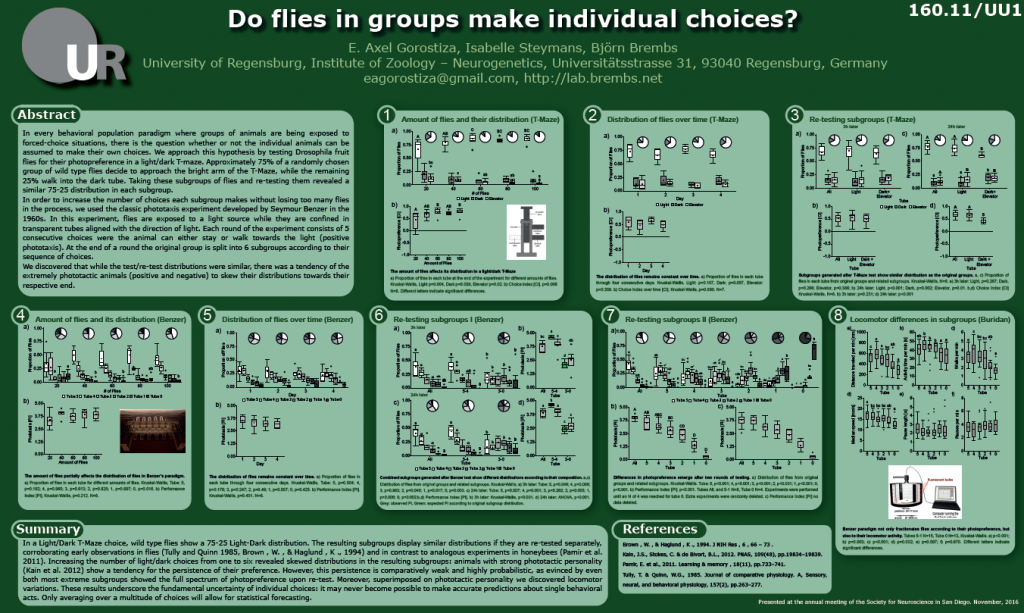
This is our first poster at this year’s SfN meeting in San Diego. It’s about decision-making in fruit flies. We find a probabilistic form of decision-making that suggests that without understanding the mechanisms behind this fundamental uncertainty, we will never fully understand decision-making. Clicking on the image will let you download the PDF Version of the poster.
This is a post written jointly by Nelson Lau from Brandeis and me, Björn Brembs. In contrast to Nelson’s guest post, which focused on the open data aspect of our collaboration, this one describes the science behind our paper and a second one by Nelson, which just appeared in PLoS Genetics. Laboratories around the world are generating a tsunami of deep-sequencing data from nearly every organism, past and present.
Why our Open Data project worked, (and how Decorum can allay our fears of Open Data). I am honored to Guest Post on Björn’s blog and excited about the interest in our work from Björn’s response to Dorothy Bishop’s first post. As corresponding author on our paper, I will provide more context to our successful Open Data experience with Björn’s and Casey’s labs.
This is a response to Dorothy Bishop’s post “Who’s afraid of open data?“. After we had published a paper on how Drosophila strains that are referred to by the same name in the literature (Canton S), but came from different laboratories behaved completely different in a particular behavioral experiment, Casey Bergman from Manchester contacted me, asking if we shouldn’t sequence the genomes of these five fly strains to find out how they